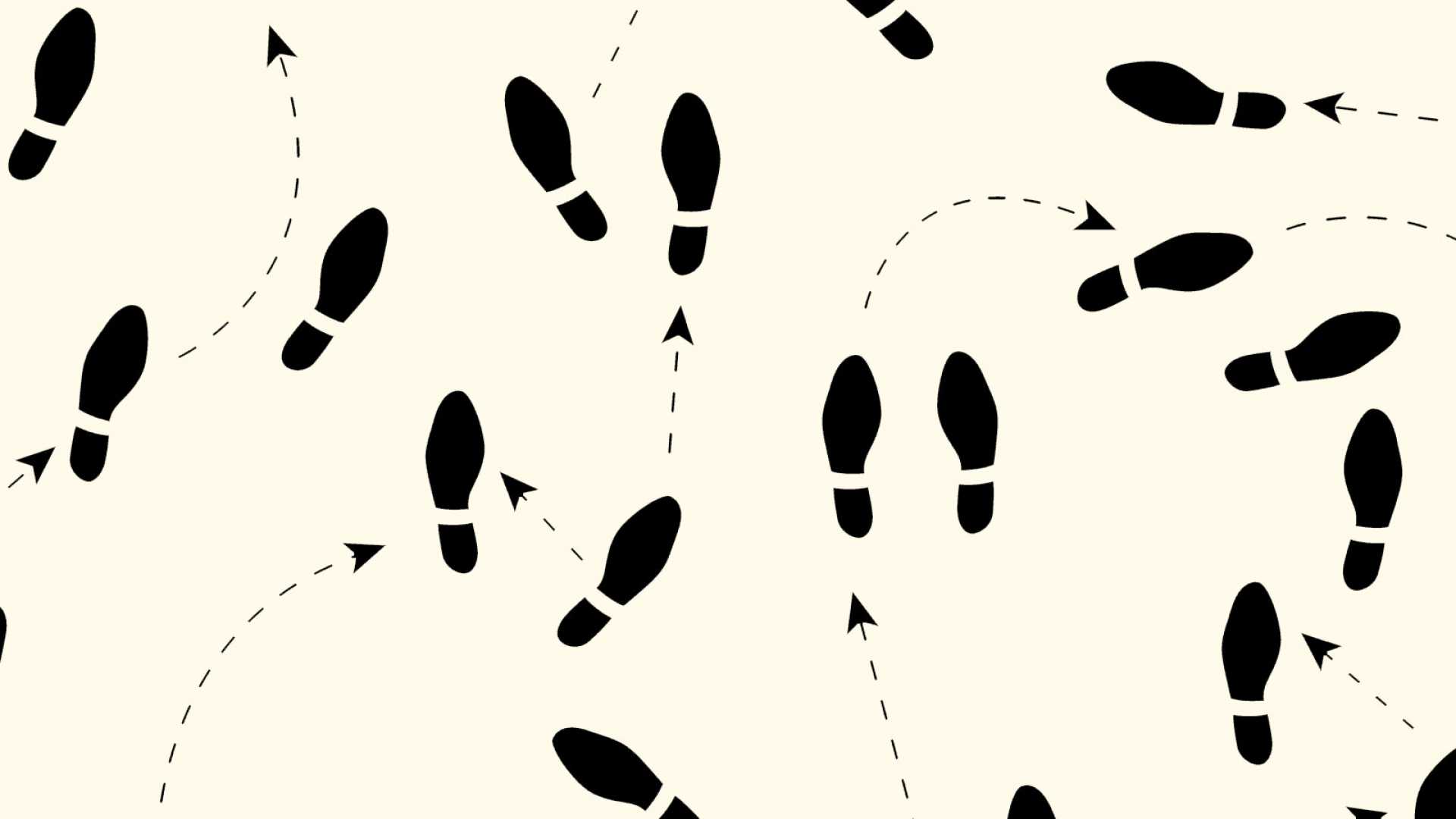By: Aric Short, Professor of Law & Director of the Professionalism and Leadership Program, Texas A&M University School of Law
In Part I, we talked about three important competencies that help us accomplish difficult tasks: grit, resilience, and strategic pivoting. Putting those competencies into action can make an enormous difference, in particular, for students struggling to rebound from disappointing Fall grades. But the long-term benefit in professional identity formation can be even more powerful given the challenges and setbacks that lawyers frequently face. As essential sub-parts of being self-directed, these competencies better position students for later professional success.
Effectively pivoting can be especially hard for law students for various reasons as discussed in Part I. So in this post, we’re going to cover a number of specific, practical steps to begin strategically pivoting to achieve greater academic success. And for students who may feel bewildered or even despondent about their Fall grades, I want to add a personal plug: I know this process works. Having worked with hundreds of 1Ls, I’ve personally seen students make dramatic gains in the Spring following this general approach.
Step 1: Practice self-compassion. Let’s not sugar-coat it: In the face of disappointment, whether it’s about grades, a relationship, or something at work, we can feel bad about ourselves. Our feeling isn’t just that the goal wasn’t achieved; it’s that we failed. It’s about us. For law students already struggling with imposter syndrome, lower-than-expected grades can serve as fuel for their inner-critic: “See, I told you that everyone else is smarter. You shouldn’t be here.”
In difficult times like this, it can helpful to quiet the internal dialogue by adopting the perspective of giving advice to a friend you care about. What if your friend were in this situation, and she were looking to you for counsel? What would you say? You probably would remind her, first, that her acceptance to law school was built on a long track record of success, some of which didn’t come easy. You’d also remind her that the admissions office didn’t, in fact, make a mistake in letting her in. And you’d give her unconditional support and encouragement to believe in herself and take the steps necessary to regroup and figure out an effective way forward.
Although law students often exude confidence externally, many are plagued with relentless self-doubt and self-critique. So if you’re feeling some of these kinds of emotions, it’s normal. You’re not alone. In fact, many attorneys also feel these same emotions—and yet, a large number of those attorneys are very successful. So self-doubt in law school is not inconsistent with success as a lawyer. Recognizing that reality can make it easier to accept yourself and, maybe, give yourself a little grace. Doing so can help your psychological well-being and give you the physical and mental strength necessary to effectively gather the necessary information and strategize about how to effectively pivot. So, work on healthy sleep, eating, and workout habits. Remain connected to friends and family who support and encourage you. Take care of yourself.
Step 2: Choose your focus wisely. Within the academic setting, imagine one large circle containing the things you care about. Only you can know what’s in that circle, but it might include making higher grades, feeling like you’ve worked as hard as you can, being invited to join a journal, becoming an effective oral advocate, being selected as a teaching or research assistant, etc. And then imagine a second circle containing all the things you have control over in your life. Your most efficient, effective use of time and energy is at the intersection of these two big circles: the things you can control that also matter to you.
It gives us a sense of security to imagine that we control a lot in our lives; but in reality, we really don’t. What we truly control, I think, boils down to two areas: our effort (behavior) and our attitude. That’s it. We like to think we control outcomes: whether we make an A in a class or whether we get hired for a certain job. But we don’t. We can certainly influence and affect these kinds of outcomes as a result of our effort and attitude, but we absolutely do not control them.
Is this just a theoretical distinction without practical meaning? I don’t think so. Going back to Step 1, we often take “failure” personally, as a reflection of some shortcoming of ours. But if we can step back a little and recognize that we never had control over those outcomes to start with, we can refocus on what we do, in fact, control while also treating ourselves more humanely. By doing so, for example, our focus can shift from getting an A to working more strategically to execute as effectively as possible on the exam. Reframing in this way gives us a sharper, more honest way to evaluate ourselves.
Step 3: Ask useful questions to identify what is real. Useful questions might be grouped into three categories: (1) Why Questions; (2) You Questions; and (3) Community Questions. “Why Questions” focus on the big-picture: Why are you in law school? Why are you willing to work hard and persevere through three (or more) difficult years of schooling? What do you hope to accomplish with a law degree? The answers to these kinds of questions are foundationally motivating. They help illuminate your purpose and can motivate you in difficult, trying times. People who demonstrate grit and resilience often have a clearly-identified purpose that serves as an ongoing source of strength, motivation, and even inspiration.
“You Questions” are some of the most important questions to ask in this process: What did you do the first time to prepare? How did you spend your time studying on a daily basis? Was your focus on class preparation or getting ready for exams? What happened on your exams? This category of questions gathers both the steps you took as you prepared to execute and the specific results, at a granular level, of your assessments. Meaningfully evaluating your performance in each class may be the trickiest part of this analysis.
To truly gather the necessary information to pivot effectively, you need detailed information from your Fall courses. For midterms and final exams: How did you do on each section of the assessment, as compared to the class high, low, and average? Were you consistent in your performance across all of your doctrinal classes? How did you do in your 1L writing class as compared to your doctrinal classes? How did you do in your writing class as compared to the essay components of your doctrinal classes? What feedback do your professors have on your assessments? The answers to these kinds of questions give you important information on what should be your focus of attention this semester. And without fact-based answers to these questions, you’re just guessing about what to do differently.
Finally, “Community Questions” help you consider resources beyond yourself that could be useful. What school resources are available? How can you access them? When would be the most beneficial time to do so? Are there resources your classmates can provide? Within this category of questions, you may identify possibilities such as visiting professor office hours to clarify areas of confusion every week. Or meeting with academic support staff for strategies on answering multiple choice questions. Or forming a study group to begin preparing for your midterms.
It’s important to emphasize that within this step, the goal is to gather specific information about what is real. Although that point may seem obvious, my experience is that many, many students at this point in the semester have reached conclusions about what is real based on their unreasonably negative emotions. In emotionally difficult situations, particularly when there is significant uncertainty and a perceived lack of control, we tend to conflate the emotions we’re feeling with reality. If we’re feeling “not good enough” or “a failure,” it’s easy to jump to the conclusion that these feelings reflect the truth—that we are, in fact, not good enough or a failure. The negative spiral that often follows can be powerful.
Walking a healthy and useful line here can be challenging. On the one hand, it’s essential to be aware of and process your emotions. What you’re feeling in any given situation carries meaning. Attorneys and law students are not well-served by blocking and ignoring their emotions. But we need to see emotions in perspective. Perhaps one useful way to frame this balance is that while our emotions are valid, they do not necessarily reflect reality. In fact, we might go so far as to say that emotions (especially negative ones experienced in times of stress and uncertainty) are not reality unless proven otherwise.
Step 4: Putting it all together. If you’ve worked through the prior steps, you have in front of you the raw information needed to make thoughtful, effective decisions about adjusting your study plan this semester. Your actual plan is personal to you and your needs, rather than some generic template. But here are a few general observations, based on years of working with 1Ls, that might help you consider how to strategically pivot this semester.
- Consider the purpose of your study activities. Fall 1L students need to spend significant time learning how to read appellate cases and understand their various components. For many students, this involves reading the assignment multiple times and creating a written brief for each case. Most of that significant time investment is focused on understanding the material well enough to follow class discussions. Students also frequently cite another, related reason for spending so much time preparing for class: They don’t want to be embarrassed if they’re called on for a case. You’ll need to figure out, with reflection, whether the cost-benefit tradeoff was worth it for you. In particular, did you over-prepare for class discussions, particularly in light of how much (or little) those discussions directly impacted your final grade?
- Shift study time to make it more effective. With a little experience under your belt, maybe it makes sense to reallocate your study time for each class. For example, if you allocate two readings for each case, maybe move one of those to after class so you can see the case in light of your professor’s comments and class discussions. Without adding time to your overall studying, this pivot may increase the value of the time you’re investing.
- Look for near-value activities. These are study activities that do bring some value; however, their worth could be greatly enhanced with just a little more time investment. Practice questions are the prime example. Maybe you worked some sample questions in the Fall, but you didn’t seek input from your professors on your answers. That may have been due to time constraints or a reluctance to attend office hours. But if you have the opportunity to seek feedback on practice questions from the person who will be grading your final exam, why wouldn’t a reasonable person prioritize that activity? Ten minutes in office hours talking about your practice answer can be invaluable.
- Target your weaknesses. This should be obvious, but look for specific ways to address the relative weaknesses you identified when you analyzed your Fall exam performances. What types of questions give you trouble? If there were areas of material you never fully understood, what could you do differently this semester to avoid that problem?
- Look for subtractions. Pivoting, by definition, involves subtractions, as well as additions. As a rule, law students work very hard, and I’m not suggesting that most students should invest a net increase in study time this Spring. Whatever you’re adding in terms of study time and activities should be more than offset by what you’re taking away. Be rigorous in your evaluation of what you spent your time on this Fall. Was each activity strategically designed to bring you closer to your goal? If not, don’t be shy about abandoning that task (and then carefully evaluating the impact of that decision). What might fall into that category? Possibly extra passes through your reading even after you understood it; unproductive study group sessions that were disorganized and without a clear goal; reading outside sources to make absolutely sure you understood everything you could about the covered material; or tracking down and working every multiple choice question available.
Although pivoting can be challenging for all of us, a stepwise process of gathering relevant information and then strategically plotting a path forward can help. And as we become more adept at pivoting, our overall self-directedness improves as well.
Please feel free to reach out to me at ashort@law.tamu.edu if you have any questions or comments.

Aric Short, Professor of Law and Director of the Professionalism & Leadership Program, Texas A&M University School of Law

